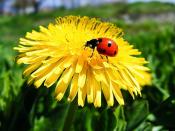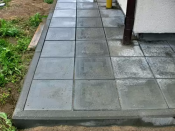Search
Login
Work in the garden. How to water fruit trees, watering time
An insufficient amount of moisture in the soil negatively affects the condition of any plant, this also applies to large fruit trees. They quickly age, lose their productivity dramatically, their fruiting is reduced, and the threat of frostbite in winter becomes more real for them. But excessive moisture should also not be considered a favorable circumstance: moisture displaces oxygen from the soil and contributes to the accumulation of carbon dioxide, which can lead to the death of roots or inhibition of the root system.
Content:
- When to water fruit trees video
- Watering Rules
- Different watering methods video video
- How to determine the amount of water when watering from a hose
- Some useful tips from experienced gardeners
When to water fruit trees

To maintain health and fertility, you should know when to water fruit trees. Plants need special care in the first few years after transplantation: during this period, active formation of the crown and development of the root system takes place, but the existing roots of the tree are still not powerful enough to provide all the needs of the plant. If the summer is dry, then it will be necessary to water the seedlings 5-8 times per season, if it is moderately wet, then 3-4 times. For a young tree, 2-4 buckets of water will be enough, for a seven to eight year old, from 10 to 15.

Watering is recommended to coincide with certain stages of plant development: spring watering is done in early spring before buds open. The next time the tree will require an increased amount of water after two weeks after flowering. Moisturize the soil a couple of weeks before the projected harvest. Abundant water-charging irrigation before leaving the tree for the winter makes special sense.
It is especially important to produce winter irrigation of fruit trees in the event that autumn is arid. If in October the plant does not store enough moisture, then the drying of the wood can lead to freezing of the tree in winter, well-moistened soil freezes to a lesser extent.
The rate of water application during late fall irrigation is about 5-6 buckets per square meter. square meter. Water should be introduced into grooves made around the circumference around the trunk, the opinion that it is useful to water trees in trunk funnels is not correct. The area in which the peripheral roots, which work more actively, needs more moisture. In principle, enhanced moistening of the soil adjacent to the vertical root is not required; moreover, modern agronomy is of the opinion that it is harmful to the plant.
Watering Rules

To water the trees correctly, you should have an idea of \u200b\u200bhow the root system is arranged. It is generally accepted that the depth of the root zone, and therefore the zone where the roots can actively absorb water, is as follows:
- for non-bearing young trees, pears and apple trees - from 0.5 to 0.7 m
- fruiting on dwarf rootstocks, in fruiting stone fruits is from 0.5 to 0.7 m
- for adult currant bushes - up to 0.7 m, for young - up to 0.4 m
- gooseberries - from 0.25 in young animals to 0.6 in adult plants.
More abundant and frequent watering will be required for plants on dwarf rootstocks with a weak root system. Gardens full age can be watered less often. To ensure the preservation of moisture, mulching of the soil of the trunk circle is used. The last watering of autumn-winter apple varieties is done no later than 2-3 weeks before harvesting.
Different watering methods

Economical and fairly simple to arrange is considered drip irrigation of trees. With this method, water flows slowly, directly into the root zone, its distribution occurs in two directions: vertical and horizontal. If the tree is large, it is better to equip two droppers on opposite sides of the trunk, for small seedlings one system will be enough.

Depending on how much water is required to be included, watering will be required for a period of 1 to 3 days. The duration of irrigation is also affected by the rate of leakage of water from the system. You can apply drip irrigation both on flat areas and on slopes, it is effective on different types of soil.
Today, the industry produces various types of drip irrigation systems. It should be noted that the main drawback of droppers is their tendency to accumulate salts and solid impurities, and as a consequence - clogging.

Good results are obtained by watering trees sprinkling. Water that is supplied with the help of sprinklers is absorbed evenly by the soil, does not lead to its erosion and siltation. Sprinkling systems are also used when watering berry crops.
Recently, a method is gaining popularity. watering in wells. They are being built 1 by 1.5 -2 square meters. meters., in the trunk circle. The diameter of the well should have a diameter of 0.1 to 0.12 m, depth - up to 0.5 m. The well is filled with sand, broken bricks, and gravel. In the fall, these wells will need to be insulated - to prevent the possibility of freezing of the soil. Through the wells, you can add not only water, but also nutrient solutions.
How to determine the amount of water when watering from a hose

Sometimes you have to combine watering trees with a hose and performing other work in the garden. The hose is placed in the prepared hole and left for a while. It can be impossible to determine exactly, and sometimes even approximately, how much water fell under a tree. To prevent a situation, it should be noted how long a full bucket is collected from the hose, then, in accordance with the watering rate, the amount of time it takes to find the hose under each of the trees is calculated.
Some useful tips from experienced gardeners

- It is not the frequency of irrigation that matters, but their usefulness - for an adult tree four, but plentiful irrigation will be enough. If the crop is not high, then only two irrigations are carried out.
- Frequent watering with a small amount of water will not be good, but harm.
- For clay soil, rare irrigation with a large amount of water is required, for sandy soil - more frequent, with less consumption.
- They do not water the trees during flowering - they organize it at a time when the ovary begins to grow.
- It is necessary to pour water not on the root neck of the tree, but evenly on the entire near-trunk part of the soil.
- Do not allow the roots to be exposed during the moistening of the soil, if nevertheless this happened, you should immediately fill them with soil.
- If the garden is ennobled with turf, then more water should be used when watering.
- It is impossible to say clearly how often watering trees can be done - watering is planned depending on the weather, the needs of plants for watering, and the quality of the soil in which they grow.
- It is not recommended to additionally moisten the soil during the ripening period of the crop - this can provoke cracking and falling of the fruit.
- The final watering of the season is carried out during the active leaf fall.
- Early varieties of pears and apple trees are in greater need of watering.
- Pome seeds should be watered more often than stone fruits.
- The more the ovary on the tree, the more plentiful watering it needs.





